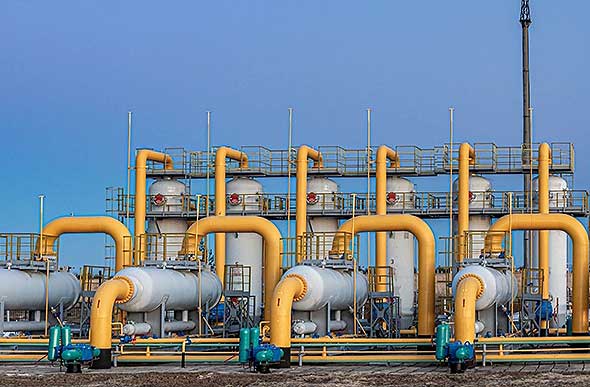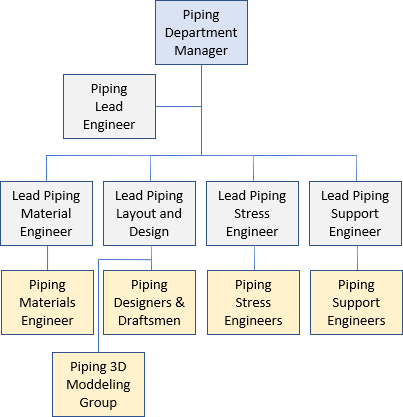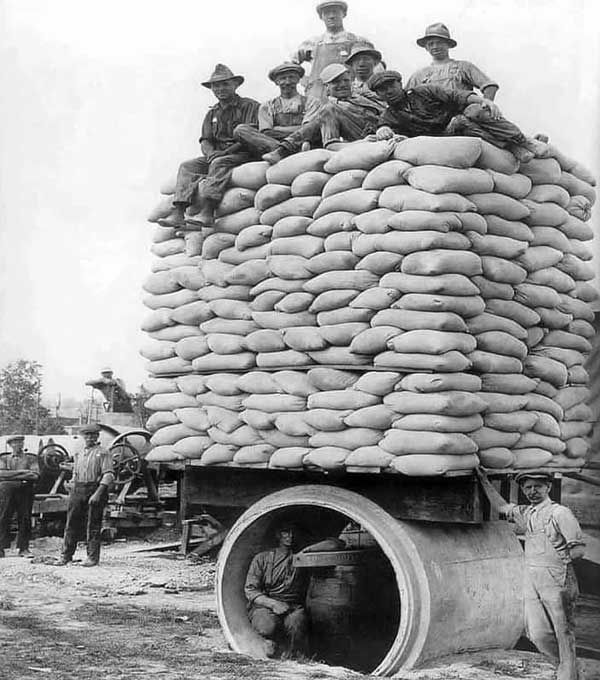Piping Engineering |
Piping Engineering is a specialized discipline of Mechanical Engineering that deals with the design of piping and layout of equipment and process units in chemical, petrochemical or hydrocarbon facilities.
Piping Engineers are responsible for the layout of overall plant facilities, the location of equipment and process units in the parcel and the design of connected piping according to applicable codes and standards to ensure safe operation of the facilities for the design life.
Piping can be defined as an assembly of piping components used to transport or distribute process fluid from one facility to another in a process plant. The piping components that make up this whole are pipes, fittings, flanges, valves, pipe specials, bolts and gaskets. This definition also includes pipe supporting elements such as pipe shoes, but not supporting structures such as pipe racks, pipe sleepers and foundations.
According to ASME B31.3, the piping designer is responsible to the owner to ensure that the piping design meets the requirements of this code and any additional requirements of the owner.
Piping engineering is a very important aspect of plant design and goes far beyond designing piping to ASME codes. There are several ASME codes for piping. Most installations in the petrochemical and hydrocarbon industries use the ASME B31.3 code for process piping design.
So what does ASME B31.3 Piping Code covers?
It should be noted that the ASME B31.3 code is not a design manual. The code does not serve as a substitute for good engineering judgment on the part of the owner and designer. Many decisions that must be made to achieve a good piping installation are not specified in detail in the code. The introduction to the code clarifies this aspect of the ASME B31.3 code.
ASME 31.3 provides broad guidelines and rules for the following aspects of piping design..
- References to applicable material specifications and part standards, including dimensional requirements and pressure-temperature values.
- Requirements and data for evaluation and limitation of stresses, reactions related to pressure, temperature changes and other forces.
- Requirements for the design of parts and assemblies, including pipe supports.
- Guidelines and limitations for selection and application of materials, components and joining methods.
- Requirements for examination, inspection and testing of pipelines.
- Requirements for the manufacture, assembly and installation of pipelines.
 Image.. modpacksystem.com
Image.. modpacksystem.com
Piping Engineering and design skills
Piping Engineering roughly encompasses the following skills..
- Plant Layout
- Equipment Layout
- Piping Layout
- Piping Materials
- Piping Supports
- Piping Stress Analysis
- CAD or 3D Modeling
Typical organization structure for piping engineering
In many engineering organizations, a piping discipline is organized into two groups; piping engineering and piping design. The engineering group deals primarily with piping material specifications, piping materials and stress analysis, while the design group deals with plant layout, equipment layout and piping layout.
The lead piping engineer on the project is fully responsible for piping engineering and design of the project. The lead designer responsible for plant, equipment and piping layout reports to the lead piping engineer.
This organizational setup works successfully in most organizations because it eliminates conflicts through a single point of responsibility, and ensures that a high level of coordination and interface is maintained between the engineering and design groups.
On a large project, the Lead Piping Engineer is responsible for the overall piping design and is supported by the Piping Department Manager and the following piping subgroups..
- Materials Engineering Group
- Layout and Design Group
- Stress Engineering Group
- Support Engineering Group

Lead Piping Engineer Responsibilities
The Lead Engineer is expected to be knowledgeable in all aspects of piping engineering and have good management skills. He is responsible for daily planning and delegating tasks to team members to deliver piping deliverables on time and meet project objectives. Following are the key activities and responsibilities of Lead Piping Engineer..
- Manage piping engineering activities and deliverables on the project.
- Oversee compliance with industry codes and standards and department work instructions, specifications and standards for the assigned project.
- Participate in the development of the overall piping engineering schedule and review piping engineering progress and manage the budget.
- Coordinate review of supplier drawings and data used for the project.
- Coordinate and liaise with lead engineers of the disciplines to ensure smooth flow of all information on the project task force, and ensure alignment with project requirements.
- Review drawings and data from piping valves and specialized suppliers.
- Prepare piping construction scope of work.
- Participate in the development of PiDs, package specifications, construction specifications, project schedules, project budgets and construction planning.
- Perform quality reviews such as discipline and interdisciplinary checks for detailed engineering documents and specifications.
- Schedule and participate in all inspection/testing activities related to their respective piping and equipment packages.
- Organize and lead design, layout, constructability and 3D model reviews.
- Oversee and assist in the preparation of reports for feasibility studies.
- Support the Project Manager on piping engineering and planning issues related to the project.
Piping Material Engineer Responsibilities
The Piping Material Engineer is responsible for preparing bill of material for piping, piping material specifications and other material procurement requests, technical evaluations of bids and purchase requisitions. The bill of material for piping is usually prepared by the layout group or extracted from the 3D model at an advanced stage of the project. The following are the main activities and responsibilities of the piping material engineer..
- Prepare piping material classes.
- Prepare piping specifications including material procurement specification.
- Preparing piping speciality list and data sheets for special items.
- Preparing valves specifications and data sheets.
- Checking bill of material for correctness of descriptions.
- Prepare piping material enquiry requisitions.
- Prepare technical bid evaluation.
- Review of Vendor drawings.
- Prepare piping purchase requisitions.
Piping Engineering Deliverables
The piping engineering disciplines are responsible for deliverables. Different organizations and different regions of the world may use different terminologies or establish additional deliverables depending on the scope of the project, which are in parentheses..
- Plot Plans (Overall Plot Plan and Unit Plot Plans)
- Equipment Layouts
- Piping General Arrangement Drawings (Piping Plans)
- Piping Section and Details (Usually included as part of Piping Plans)
- Conceptual Piping Layouts or Study Piping Layouts
- Piping Isometrics
- Line Designation Table (Line List or Line schedule)
- Tie-in Schedule (Tie-in Index)
- Nozzle Orientation Drawings
- Piping Demolition Drawings
- Pipe Support Details
- Material Take Off (Bill of Material)
- Piping Material Classes
- Piping Specifications
- Speciality Items List
- Data Sheets for Valves
- Data Sheets for Piping Specials
- Technical Bid Evaluation
- Piping Stress Analysis Report
- 3D Piping Model
Economic aspects of the installation
Last but not least, an optimized and economical pipeline route is very important to reduce project costs and increase profitability. Therefore, the economic aspects must be taken into account when designing pipelines.
Professionals who possess such knowledge and constantly apply it in their project work are undoubtedly very good piping design engineers or piping designers, or piping layout engineers.

Related Post(s)

Piping design is a crucial part of engineering projects and process plants, involving the creation of systems that transport....